Amortization is one of those financial terms that can get folks’ eyes glazing over faster than a fresh doughnut. But fear not! By the end of this guide, you’ll be a boss at breaking down what amortization is all about—in plain English, no less—and why it matters to anyone with their name on a mortgage.
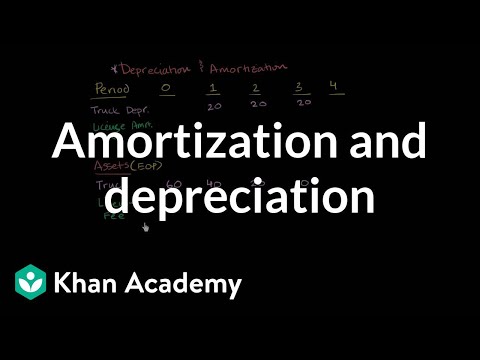
Demystifying Amortization: A Complete Guide
Mortgage Loan Monthly Amortization Payment Tables Easy to use reference for home buyers and sellers, mortgage brokers, bank and credit union loan … of a given amount, term, and interest rate.
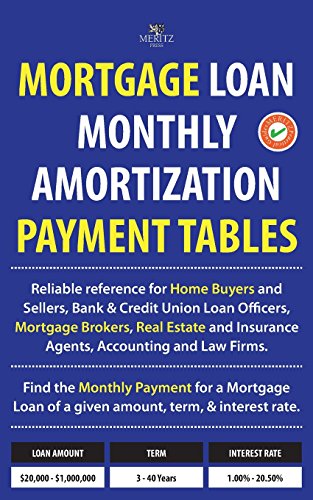
$16.95
“Mortgage Loan Monthly Amortization Payment Tables” is an indispensable tool designed to streamline the home-buying process for buyers, sellers, and financial professionals alike. This comprehensive reference guide provides users with easy-to-understand tables that illustrate monthly payments for mortgage loans at various interest rates, terms, and principal amounts. Whether you are a first-time homebuyer or a seasoned mortgage broker, this resource saves time and simplifies the calculation of monthly mortgage repayments, enabling a clearer financial planning path for one of life’s most significant investments.
The tables are thoughtfully organized to cater to a wide range of loan conditions, offering a detailed breakdown of each payment’s impact on the principal and interest over the life of the mortgage. This allows users to quickly compare how different rates and term lengths can affect their long-term financial commitments, making it easier to identify the most cost-effective loan options. Moreover, real estate professionals, bank staff, and credit union loan officers will find the tables invaluable for providing clients with immediate estimates and answers during consultations.
Equally beneficial for educational and practical applications, the “Mortgage Loan Monthly Amortization Payment Tables” is a go-to reference that complements any financial literacy efforts. By demystifying the complexities of mortgage amortization, this user-friendly book empowers individuals to make more informed decisions, contributes to smoother transactions, and promotes a deeper understanding of the financial responsibilities associated with home loans. Whether you’re guiding clients towards their dream home or navigating your own purchase, this versatile tool will prove essential in every real estate and financial toolkit.
Step 1: Understanding the Amortization Basics
First up, let’s chat about what amortization actually means. The term’s got a fancy ring, but it’s just an accounting technique used to gradually lower the book value of a loan or intangible asset over time. Think of it like slicing up your loan into bite-sized monthly payments, making it easier to chew over, say, 30 years.
A little history lesson never hurt nobody. Amortization has been around for ages in the mortgage world. It’s like the Toy Story Land link to ( of finance: a journey with familiar twists and turns, evolving with time and technology.
The difference between full and partial amortization is like choosing between snorkeling above an Underwater Waterfall link to ( and deep-sea diving into it. For Full Amortization, your payments zero out the balance by the end of the term. With Partial Amortization, payments are like a Mous Case link to ( protective but if you drop it, there’s still outstanding balance at the end.

Step 2: Calculating Amortization Components
Every single payment you make on a mortgage is like a football team’s Pass Rush link to ( aimed at gaining yards toward the goal line — owning your pad outright. The principal cuts down what you owe, and the interest is the cost of borrowing the meat and potatoes.
Longer terms and higher interest rates make a loan cost more over time. It’s like wallpapering your entire house with Demon Slayer wallpaperlink to ( — you get a lot of drama for a long period of time.
Hop on an amortization calculator, and you’ll see the breakdown faster than you can say Adjustable-rate Mortgage link to ( These tools are super helpful in visualizing your loan’s future.
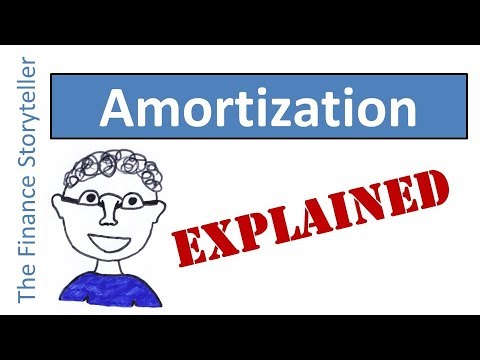
Step 3: The Amortization Schedule in Practice
The “Amortization Schedule” link to ( is your financial planner, laying out each payment, what goes to principal, and what’s eaten up by interest.
Early on, your payments are like an elevator going up – lots of interest with just a smidgen of principal. Over time, as you pay down the principal, that ratio flips, like a pancake on a Sunday morning.
Seeing these payments laid out in graphs and charts can be eye-opening, like first understanding What Is a mortgage link to ( It helps you see the light at the end of the 30-year tunnel.
McGraw Hill’s Interest Amortization Tables, Third Edition
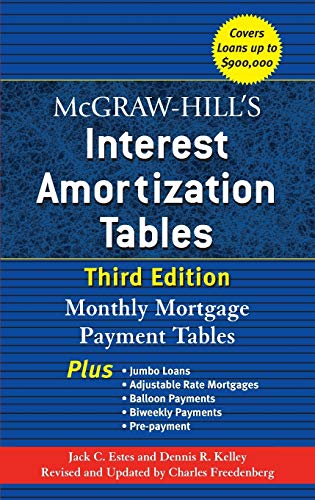
$21.00
McGraw Hill’s Interest Amortization Tables, Third Edition, is an essential resource for finance professionals and students who need to calculate loan payments and understand the details of amortized loans. This comprehensive guide includes easy-to-use tables that allow readers to quickly determine monthly mortgage payments, total payment schedules, and the amount of interest over the life of the loan for a wide range of interest rates and loan periods. Whether you’re a real estate agent, a small business owner, or a consumer seeking to make informed decisions on financing purchases, this book is an invaluable tool.
With its clear and concise layout, the Third Edition has been thoroughly updated to reflect the latest interest rates and market conditions. Users will appreciate the expanded range of loan values and terms included, which now provides even more detailed scenarios for various lending situations. The book’s introduction also covers the basics of amortization and principal, setting a solid foundation for those new to the topic.
In addition to providing practical amortization tables, McGraw Hill’s Interest Amortization Tables, Third Edition also offers valuable insights into the strategies for loan structuring and refinancing. By understanding the details provided in the tables, borrowers and lenders can make more informed decisions that can lead to significant savings over the lifetime of a loan. This edition also includes examples and explanations on how to adapt the tables for use with different types of loans, making it a versatile tool for personal and professional finance management.
Step 4: Strategies to Navigate Amortization for Financial Benefit
It’s a balancing act between monthly affordability and overall interest paid. Like picking the right pair of jeans, you want the amortization period that fits your financial goals snugly.
Paying more principal now is like planting a tree: you’ll save on interest big time down the road. Using methods like bi-weekly payments can cut years off your loan.
Refinancing can be a game-changer, altering your loan’s terms and interest. It’s like hitting the reset button on your amortization plan.

Step 5: Unveiling the Impact of Amortization on Long-Term Financial Health
Amortization shouldn’t hog your financial spotlight. You’ve got other stars on your team, like retirement savings and emergency funds. It’s all about finding that sweet spot.
Amortization is the secret sauce for building equity in your home. The faster the principal drops, the quicker you can wave bye-bye to pesky PMI (Private Mortgage Insurance).
For many, mortgage interest is deductible, which can initially make your tax bill not so scary. It’s a piece of the puzzle to wisely place in your financial strategy.

Conclusion: Amortization as a Financial Compass
All in all, amortization is more than just a hefty word on your mortgage statement; it’s a financial compass that guides you toward true home ownership. Surviving the twists and turns of a loan is akin to setting sail toward financial independence. By demystifying the concept and embracing its strategic value, you’re already on the right course to reach those fiscal milestones on the horizon.
Stay sharp and keep an eye on future trends, like potential tech that might streamline the whole process, making it quicker and more manageable than ever before. Amortization will no doubt continue to shape the mortgage industry — it might evolve, but the fundamental journey from debtor to outright homeowner remains timeless.
Monthly Interest Amortization Tables
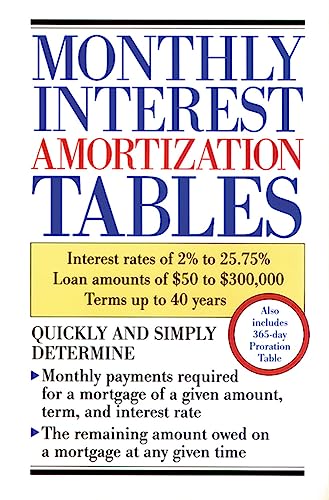
$14.61
“Monthly Interest Amortization Tables” is an indispensable financial tool designed to assist lenders, borrowers, and financial analysts to effortlessly comprehend how loans are paid off over time. Each table within the collection meticulously breaks down periodic payments into interest and principal components for the entire term of the loan. Based on the principal amount, interest rate, and loan term, these tables provide at-a-glance information which makes financial planning and decision-making both clear and efficient. Furthermore, they can be tailored for various loan types, including fixed-rate mortgages, car loans, and personal loans, ensuring broad utility.
This product serves as a reliable guide for anyone managing or monitoring loans, offering a monthly snapshot that reveals the gradual transition from paying mostly interest at the outset to primarily reducing the principal toward the end of the loan’s life. Users can quickly determine the total cost of a loan, including the aggregate interest paid, which facilitates a better understanding of the true cost of borrowing. It is also an excellent resource for individuals exploring the impact of additional payments on their loan’s lifespan and overall interest, empowering them to make informed decisions about their finances. Whether printed or in digital format, these tables are user-friendly and readily accessible to all users, regardless of financial background.
For businesses and finance professionals, the “Monthly Interest Amortization Tables” product is a time-saving asset that eliminates the need to manually calculate amortization schedules. This helps in presenting clients with clear and concise payment strategies, aiding in client education and satisfaction. With the detailed financial insights these tables provide, they also play a significant role in loan negotiations and can influence the structuring of new loan products. Above all, this valuable resource is designed to promote transparency and understanding in financial agreements, thereby fostering trust between lenders and borrowers in any financial transaction.
There you have it, amigo! You’re now well-versed in the ways of amortization. Go forth, conquer that mortgage, and remember: the more you know, the less daunting it all seems. Let this be your call to action — understanding and managing your amortization with the finesse of a financial whiz!
Unraveling the Mystery of Amortization
Amortization is quite the financial chameleon—essential for loans but often as misunderstood as a chameleon in a rainbow! It’s not just a fancy term used to confuse the average Joe, it’s a real game-changer in the world of finance. Let’s break it down with some trivia and facts that’ll stick better than your morning oatmeal.

“I’m on a (Repayment) Schedule!”
Did you know that each payment you make on an amortized loan is like a mini financial expedition? At the start, you’re battling through the thick forest of interest, whacking down those pesky interest payments left and right. But as time marches on, you emerge into the clearing of the principal amount. It’s like making your way through an overgrown jungle till you find the treasure chest! This magical transformation happens thanks to your loan’s amortization schedule.
The Origins of “Amortization”
Ready for a history lesson? The term “amortization” comes from the Old French word “amortir,” which means to “kill.” Dark, we know—but think of it like this: each payment you make slowly “kills” the debt until it’s six feet under. So, with amortization, you’re a bit of a financial warrior, slaying the dragon of debt with every installment. Celebrate every payment made, for you are indeed vanquishing your loan, one blow at a time!
A Match Made for Mortgages
You might be thinking, “Alright, so amortization applies to just about any loan, right?” Well, sort of. While it’s true for many types of debt, it’s like a soulmate for mortgages. Seeing the majority of your early payments going towards interest rather than the principal can be a real eye-opener, like finding out pizza isn’t the healthiest meal (bummer, right?). But don’t worry, as long as you stick to the plan, you’ll eventually flip the script.
The Curious Case of Negative Amortization
Now, let’s talk about negative amortization—it’s like a financial plot twist no one saw coming. Imagine making payments so tiny that they don’t cover the interest charge. Instead of being the heroic slayer of debt, you’re unintentionally feeding it, causing the debt to grow like a gremlin splashed with water. This sneaky process can leave borrowers owing more than what they initially borrowed, and that’s the kind of growth we’re not fans of.
Extra Payments? Oh, The Power!
Here’s a pro tip that’ll have you grinning like the Cheshire Cat. Making extra payments on your principal can be more thrilling than finding money in your old jeans. It not only shortens your loan term but also reduces the total interest you’ll pay over the life of the loan. Oh yes, the force of additional payments can be strong in the quest for financial freedom!
Now that wasn’t too shabby for a quick dive into amortization, was it? Remember, it may seem complex at first, but once you get the hang of it, you’ll be navigating those financial waters like a seasoned captain. Just keep a weather eye on the horizon, and you’ll reach your destination of a debt-free life, sailing past the rough seas of interest into the calm waters of complete ownership.
Monthly Payment Amortization Tables for Small Loans Simple and easy to use reference for car and home buyers and sellers, students, investors, car … a specific amount, term, and interest rate.
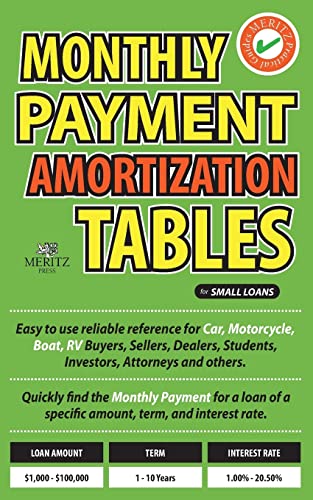
$9.95
The Monthly Payment Amortization Tables for Small Loans is an indispensable tool for individuals and professionals who manage financial transactions such as car and home purchases, student loans, or investments. Designed to be user-friendly, this comprehensive reference guide allows buyers and sellers, students, investors, and financial advisors to easily calculate monthly payments, interest contributions, and balance reductions over time. With its detailed tables showing the breakdown of payments for loans of varying amounts, terms, and interest rates, users can quickly determine the financial implications of different loan options, helping to make more informed decisions.
This handy guide is especially useful for those about to make significant financial commitments. A clear layout and straightforward explanations enable users to effortlessly navigate through various scenarios without needing advanced mathematical knowledge or complicated software. By laying out the amortization process step by step, the tables demonstrate how early payments are more heavily weighted toward interest, while later payments contribute more to reducing the principal balance, giving users insight into the dynamics of their loan over its entire term.
Moreover, the product serves as an essential asset for educators and students in finance-related courses, as well as for professionals who require a quick reference guide during client consultations. The tables are especially tailored for small loans which commonly perplex first-time borrowers. Whether planning for a home or car purchase, contemplating a student loan, or even considering a small investment loan, the Monthly Payment Amortization Tables for Small Loans exemplifies an easy-to-use, accurate, and time-saving solution for a wide range of financial planning needs.
What is amortization in simple terms?
So, what’s amortization? Well, in a nutshell, it’s the process of spreading out a loan into a series of fixed payments over time. Think of it like slicing a pie—you get to enjoy it bit by bit, rather than all at once.
What is amortization example simple?
An easy peasy example of amortization? Imagine you’ve got a car loan. Each month, you pay a chunk of change that goes partly toward the interest and partly to whittle down the principal—the amount you borrowed. By the end of the loan, voilà, you own the car free and clear!
What is a 30-year amortization?
A 30-year amortization? That’s your basic home loan marathon. You’ll be paying off that mortgage in monthly installments over—you guessed it—three whole decades. It’s a long haul, but hey, it makes for more manageable bites out of your budget.
How do I calculate amortization?
Ready to crunch some numbers for your amortization? You’ll need an amortization calculator—or a good formula. Plug in your loan amount, interest rate, and the total number of payments. Bam! Out comes your monthly payment, including how much goes to interest and principal.
What are the three types of amortization?
The three types of amortization are straight-line, declining balance, and annuity. Straight-line is easy peasy, with the same amount chipped off the principal each time. Declining balance is like a snowball rolling downhill, faster and faster. And with annuity, it’s steady sailing, same payment every time.
What is another term for amortization?
Another term for amortization? In the finance crowd, they might call it “loan repayment” or “principal reduction.” But let’s not get fancy—it’s all about paying down that debt.
How does amortization work?
Amortization in action? It’s like a financial diet plan for your loan. Each payment you make is part financial veggies (the principal) and part indulgence (the interest). Over time, you’ll shift to more veggies, less indulgence, until that debt’s all gone.
What is amortization and why is it important?
Amortization isn’t just important—it’s a game-changer. It lets you see the end game, breaking down a mountain of debt into molehills that can be tackled over time. Without it, you’d be in the dark about how each payment chips away at your loan.
What is the difference between loan term and amortization?
Loan term vs. amortization—what’s the diff? The loan term is how long you’ve got to repay in total, while amortization is about how those payments are spread out. You could have a 10-year term with a 20-year amortization, meaning you’ll need to refinance or pay a lump sum later on.
What is a 5 year loan with 25-year amortization?
Picture this: A 5-year loan with a 25-year amortization is like a teaser—you’ve got payments based on a 25-year stretch, but once those first five years are up, hold onto your hat! You’ll have to refinance, pay the rest, or sell whatever you bought.
What is a 10 year loan with 25-year amortization?
Get this—a 10-year loan with a 25-year amortization is like a mini-series. The payments are mapped out like you have a quarter-century to pay, but come the 10-year mark, you’ve either got to finish the story with a lump sum, refinance, or pass the buck to someone else.
What is better 25 or 30 year amortization?
Mulling over 25 or 30 year amortization? Here’s the skinny: 25 years means higher payments, but you’ll be out of debt quicker and save on interest. Stretch it to 30, and you’ll lighten your monthly load, but you’ll pay more in interest over time. So, it’s savvy budgeting vs. the long haul.
What happens if I pay 2 extra mortgage payments a year?
Pay 2 extra mortgage payments a year? You’ll be like the tortoise beating the hare! It’ll not just shave years off your mortgage but also save you a bucket-load of cash in interest. Now, that’s smart money moves!
What happens when loans are amortized?
When loans are amortized, it’s like watching your favorite series progress. Each episode (payment) reveals more of the story, reducing your debt, and inching you closer to that finale where you’re debt-free and the credits roll.
What is the difference between depreciation and amortization?
Depreciation vs. amortization—they’re like cousins in the money world. Depreciation is for spreading out the cost of a physical asset (like a tech gadget) over its useful life. Amortization? That’s all about loans and intangible assets, smoothing out payments or valuing intellectual property over time.



